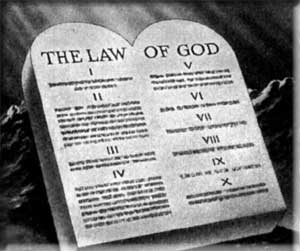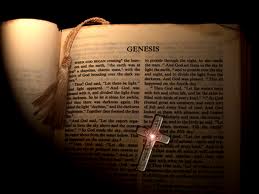What Can We Know About Heaven?

With the advent of multiple movies in recent years about Heaven from the perspective of alleged eyewitness accounts (people who have died, gone to heaven–again, allegedly–and lived to tell about it), people often ask the question: “What can we really know about heaven?” As Catholics, we do not get our theology from private revelations, even if they are approved by the Church, much less from alleged experiences of well-meaning people who’ve had some sort of encounter that they may consider real.
So what can we know? Here we go!
Then Cardinal Ratzinger, in his book, Eschatology: Death and Eternal Life, published in 1988, warns against depicting heaven as an extension of this life prettied up with depictions of “wolves laying down with lambs,” and eternal picnics. Not only do we have the real problem with the fact that most of the world lives in abject misery, materially speaking—we forget that living in our modern United States of America where “the poor” often means not being able to afford all 2,000 cable channels—but we also must remember that wolves, lambs, and picnics get boring after a few million years. These depictions just don’t cut it for the modern, thinking man.
On the other hand, I Cor. 2:9 is overused as well. “Eye has not seen, ear has not heard,” with regard to heaven is often used as a cop out. Yes, it is true. Heaven is ultimately beyond what has ever “entered into the heart of man.” But there are certain things we can know about heaven even if now we “see in a mirror dimly” what will only be revealed fully in eternity (I Cor. 13:12). If we are going to excite people about the prospects of heaven, Ratzinger says, and if there is going to be a healthy sense of fearing the “loss of heaven” as we enter the confessional, a biblical and traditional understanding of the nature of heaven is essential.
What the Church Teaches
CCC 1023:
Those who die in God’s grace and friendship and are perfectly purified [whether in this life, or in the next life in Purgatory] live forever with Christ. They are like God forever, for they “see him as he is,” face to face.
The Catechism then quotes the infallible definition given by Pope Benedict XII in his Apostolic Constitution, Benedictus Deus, of Jan. 29, 1336:
By virtue of our apostolic authority, we define the following: According to the general disposition of God, the souls of all the saints . . . and other faithful who died after receiving Christ’s holy Baptism (provided they were not in need of purification when they died, . . . or, if they then did need or will need some purification, when they have been purified after death, . . .) already before they take up their bodies again and before the general judgment – and this since the Ascension of our Lord and Savior Jesus Christ into heaven – have been, are and will be in heaven, in the heavenly Kingdom and celestial paradise with Christ, joined to the company of the holy angels. Since the Passion and death of our Lord Jesus Christ, these souls have seen and do see the divine essence with an intuitive vision, and even face to face, without the mediation of any creature.
At the very heart of this definition of heaven is the idea of the “beatific vision,” i.e. the blessed in heaven “see God, face to face.” But what does it mean that the saints in heaven “see God, face to face?” This would seem to contradict I Tim. 6:14-16 that says:
I charge you to keep the commandments unstained and free from reproach until the appearing of our Lord Jesus Christ; and this will be made manifest at the proper time by the blessed and only Sovereign, the King of kings and Lord of lords, who alone has immortality and dwells in unapproachable light, whom no man has ever seen or can see. To him be honor and eternal dominion. Amen.
Is this a contradiction? Not at all! I Tim. 6 must be understood to mean either that man unaided by grace cannot see God, or that man can never “see” God with his physical powers of sight using his eyeballs. In other words, man cannot see God in any sense with his natural powers. The saints and all of the blessed can be said to have “seen” and that they do “see” the divine essence with a directly intuited, intellectual vision. There are multiple biblical texts that bear this out:
Rev. 22:4 – “And there shall be no curse any more, but the throne of God and of the Lamb shall be in it, and his servants shall serve him. And they shall see his face: and his name shall be on their foreheads.”
I Cor. 13:12 – “For now we see in a mirror dimly, but then face to face. Now I know in part; then I shall understand fully, even as I have been fully understood.”
Matt. 5:8 – “Blessed are the pure in heart, for they shall see God.”
I John 3:2 – “Beloved, we are God’s children now; it does not yet appear what we shall be, but we know that when he appears we shall be like him, for we shall see him as he is.”
This “vision” of God, again, is not to be understood as “seeing” God with human eyeballs. God is pure spirit and as such cannot be “seen.” This “vision of God” is a directly intuited and intellectual vision. Think about it this way: Matthew 18:10 tells us that the angels “behold the face of God,” yet they don’t have eyes at all. They are pure spirits. So how do they “see God?” They “see” him with an intellectual and directly intuited “vision.”
We use the verb “to see” like this in modern parlance. When someone comes to understand a physics problem he had been struggling with, for example, he may say, “Now I see it!” That doesn’t mean he “sees” it with his eyes; rather, it means he now understands it with his mind. This is analogous to the beatific vision. The faithful who endure to the end and so are saved will “see God,” but with an intellectual “vision” or comprehension of God. Each person will “see” or comprehend God in the beatific vision in accordance with his own capacity dictated to him by his state of grace at the moment of death. And this state of grace is determined by both the gift of God and the degree to which the blessed cooperated with that grace during his earthly sojourn.
The example par excellence of this truth is found in the Mother of God. No member of the body of Christ will “see” or “comprehend” God to the degree Mary does because she was given the greatest gift of grace among all of mankind; while, at the same time, no human person ever cooperated with the grace of God as perfectly as Mary did.
With this understanding, we can understand why the Church teaches heaven to be primarily a state rather than a place. You can’t travel “up there” to heaven. And the beatific vision cannot be understood as people being in heaven and “looking over there” and seeing God. And then if they look away from “over there” they don’t see God anymore. The blessed will be in a state of comprehension of God that is constant. They can’t leave heaven and then go back to heaven precisely because heaven is principally a state of being.
However, having said that, heaven can also be said to be a place, but in a qualified sense. In as much as in the end of time the blessed will have bodies in the resurrection; they can then be said to have location.
Okay, Fine, So What is Heaven?
Heaven is principally a state of utter and absolute fulfillment. In the possession of God in the beatific vision the blessed will experience what cannot be put into words; a radical union with God that transcends anything we could envisage. And it is precisely because of that radical union with God in Christ, the blessed will also experience a union with the other members of the Body of Christ that transcends our ability to imagine as well. The image of the mystical “body of Christ” that St. Paul gives us in I Cor. 12 and Romans 12 gives us some inkling of this union, but again, it can only pale in relation to the full truth of the matter. To use St. Paul’s image, the union of the members of Christ is more radical than the union of my finger here with my hand because it is Christ who makes the members of Christ one! This is truly incredible to think about, but in the end, we can only imagine.
We’ve already spoken of the beatific vision which is the most important component of what heaven is: as we saw in I John 3:2. It says we will be “like him for we shall see him as he is.” St. Thomas Aquinas helps us to get a sense of the glory of this “vision of God” by showing us some of its rammifications. According to “the angelic Doctor,” our intellects will be so illuminated by God to empower us to be able to “see God” in the beatific vision that an ancillary effect of this empowering will be the comprehension of “the whole order of the universe.”
Does anyone want to pause to say “wow” with me?
In the Summa Contra Gentiles, Bk. III, chapter 59, St. Thomas says, “the natural appetite is to know the genera, species and powers of all things, and the whole order of the universe,” it makes sense that this capacity would be filled in God in heaven. If you add to this the fact that the beatific vision will empower the intellects of the saints in heaven to be able to see God, which is far above the natural capacity, it only makes sense that, as St. Thomas again says, that after having come to know “the infinite,” or God himself, it would seem to follow that the lesser would be easily known. To quote St. Thomas: “The intellect which is elevated by divine light in order to see God’s substance is much more perfected by this same light, so that it may understand all other objects that exist in the nature of things.”
The Catechism of the Catholic Church seems to concur with St. Thomas. In paragraph 2040, the Church speaks to this notion of the perfection and elevation of the intellectual powers in heaven. Talk about intellectually sharp! The Catechism says, “We shall know the ultimate meaning of the whole work of creation and of the entire economy of salvation and understand the marvelous ways by which [God’s] Providence led everything toward its final end.”
What a comfort to know that every single person among the faithful who has lost a love one, a child, or suffered terribly in this life, will know how “all things work together for good to those who love God” as St. Paul says in Romans 8:28. We will see all of this in God, in heaven.
Doesn’t this sound a lot better than simply falling back on “eye has not seen,” or picking fruit and picnicking for all eternity?
Four Bodily Gifts That Await Us in Heaven
The principal gift of heaven—the beatific vision—could be the subject of a veritable library of books without ever plumbing its depths, but the Catechism of the Council of Trent, referring back to St. Thomas Aquinas, gave us four characteristics of heaven relating to the body that have been revealed to us in Scripture and tradition that can serve to give us a glimpse, however imperfectly, of the glory of heaven in a bodily sense.
I remember teaching this some time ago to a group of Southern California teens where I got the ultimate compliment: “Dude… that is very cool!” I think the “dude” part coupled with the “cool” was telling. Two thumbs up!
But at any rate, the Catechism of the Council of Trent, referencing the Summa Theologiae of St. Thomas Aquinas, lists these four “characteristics” or “gifts” that will be communicated to the blessed in heaven:
1) Subtility – This gift entails the absolute subordination of the body to the soul. So radical is this subordination that it will empower the blessed to be able to pass through a wall as Jesus did in the Upper Room in John 20:19-20, while possessing flesh and bone just as he did as well. Remember: the disciples were gathered together in fear behind locked doors, after the resurrection of Christ, and before they had seen the risen Lord. Jesus suddenly appeared in their midst, though the doors remained locked. He passed right through the doors! Yet, as is revealed in Luke 24:39, in a parallel account of this same event, also after the resurrection, Jesus said to the apostles, “… handle me, and see; for a spirit has not flesh and bones as you see that I have.”
2) Agility – In Acts 1:9, Jesus ascended up to heaven right before the very eyes of the apostles. And he didn’t even need rockets like R2D2! In fact, according to St. Thomas, the blessed in heaven, even after receiving their bodies in the resurrection, will be able to travel at the speed of thought, or in the “wink of an eye,” as St. Thomas says it, to any distance. Star Wars ain’t got nothin’ that can even compare with what awaits those who are faithful to Christ!
3) Impassibility – In simple terms, this means the blessed in heaven cannot suffer and cannot die (see Rev. 21:4). Indeed the bodies of the blessed will not only be immortal, but no sickness or any imperfection will be possible. They will not even so much as be able to stub a toe, even if they wanted to! Not that we would want to! But you get my drift!
4) Glory (or as the Roman Catechism calls it: “Brightness”) – The blessed in heaven will be glorified like Jesus on the Mount of Transfiguration. Rooted in Jesus’ own words, “… the righteous will shine like the sun,” in Matthew 13:43, the Church teaches the blessed will shine with the glory of God so brilliant that it is believed by some that we on earth could not stand to even behold one of the blessed in heaven if he were revealed in all of his glory!
If you take the Marian apparitions as an example of this, our Lady never appears to the various seers she appears to in all of her glory. She appears in a form they can handle and relate to.
But at any rate, we do catch a glimpse of the glory that awaits us in the Transfiguration where Jesus’ face “shone like the sun” (Matt. 17:2). This text not only reveals Christ’s divinity, but the glory of humanity transformed by divinity! It reveals, in that sense, what awaits our humanity. “The just shall shine like the sun.”
If you liked this post, and would like to learn more, click here.






